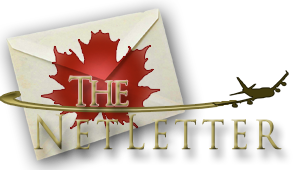|
From the collection of Pierre Gillard, Magazine #14 Musée de l'aérospatiale du Québec. Our member Édouard Painchaud photographed, on July 3, 1986 in Saint-Jean-sur-Richelieu (CYJN), this Douglas C-54G Skymaster (military version of the DC-4) from Conifair, Aviation, a specialized company in forest spraying for spruce budworm control. Registered C-GBNV and carrying the identification code 18, this four-engine aircraft was built as a C-54G-5-DO from the Douglas factory in Santa Monica, California in 1945 (construction number 35988) and is delivered to the USAAF, on July 20 of that year with military serial 45-0535. Subsequently, it was modified to the VC-54G version, which meant that it was now assigned to VIP passenger transport. In June 1971, it was withdrawn from service and stored at the Davis Monthan base in Arizona, then sold in November 1975 to Dross Metal, which registered it as N3303F. On April 22, 1976, with the same registration, it was acquired by Aero Union, which used it as a water bomber with the code 18 from its base in Chico, California. On May 8, 1981, it was stripped of American registration and became C-GBAW in Canada, where he flew for Conifair. Editors' Note: Originally registered as N3303F. Delivered to Conifair Aviation May 27, 1982 left fleet for Buffalo Airways on March 22, 1995 and stored at Red Deer during June 2011 were it was photographed by Pierre Gillard on May 18, 2020. Source:Planelogger.com |
 |
 |
 |
| The last Canadian North gravel kit-equipped Boeing 737 ended its four-decade-long career in Canada's north recently with a round-trip flight between its Yellowknife, NWT base and Cambridge Bay, Nunavut. |
 |
|
Boeing provided an optional kit for the 200 series that allowed for safe operations on gravel runways. The kit comprised a protective plate that extended behind the nose wheel that prevented gravel spray from damaging the underside of the fuselage or entering the engines, and vortex dissipators mounted in front of the two engines that used engine bleed to, again, prevent ingestion of gravel from the runway surface. The decision to retire the B-737-200 was made in view of the escalating costs of operating the old, inefficient engines and the growing scarcity of spare parts. The routes previously operated by Canadian North's B-737-200 are now operated by a fleet of ATR turboprops that, with their high wing-mounted engines, aren't affected by gravel runways in the same way. This isn't quite the end of gravel kit-equipped B-737-200's in the North. Air Inuit continues to operate four, charter airline Nolinor operates six, mining company Glencore Canada has two and Montreal St. Hubert-based Chrono Aviation has three; but their days are numbered. The final scheduled flight of Canadian North's Boeing 737-200, the 'Spirit of Yellowknife', was greeted with a water-cannon salute at the airline's Yellowknife base. Editors' Note: This aircraft was originally delivered to Dome Petroleum in April 1980. It was purchased by Pacific Western Airlines in June 1984, absorbed into the Canadian Airlines fleet in April 1987 and then Air Canada in April 2001. It was sold to Canadian North in November 2001. It has always carried its original registration - C-GDPA. |
|
Captain Hansen was the first Inuk jet captain and, in 1980, he took delivery of this very B-737 when it was new from Boeing in Seattle on behalf of Dome Petroleum, its first owner. A very proud Captain Hansen was on board the 737 when his daughter piloted the aircraft on ts final flight for Canadian North. Source: CanadianAviation.com |

